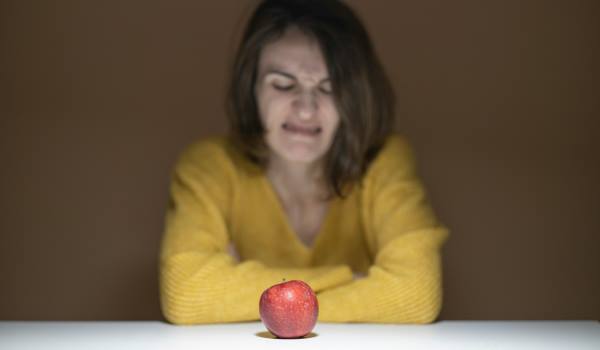Puppies are undeniably one of the most adorable and lovable creatures on Earth. It’s no wonder that many of us find them irresistible and choose to bring them into our lives as beloved companions.
However, along with the joy and cuteness they bring, raising a puppy also comes with its fair share of challenges, especially when it comes to training. As a first-time puppy owner, navigating the world of puppy training can be a daunting task.
But fear not! In this article, we will delve into various aspects of puppy training, providing you with practical tips and insights to help you navigate this rewarding journey with your furry friend.

Establishing a Routine
One of the fundamental elements of successful puppy training is establishing a routine. Puppies thrive on consistency and predictability, so it’s essential to create a structured schedule for feeding, playtime, and potty breaks.
By providing a regular routine, you help your puppy develop a sense of security and understanding of what is expected of them.
This consistency will also aid in house training, as puppies tend to learn faster when they have a set routine to follow.
House Training
House training, also known as housetraining or potty training, is perhaps the most critical aspect of raising a puppy. Teaching your puppy appropriate bathroom habits will save you from countless accidents and frustrations in the long run.
Here are some key points to keep in mind when house training your puppy:
- Supervision: During the initial stages of house training, it’s crucial to keep a close eye on your puppy at all times. This helps you anticipate when they need to relieve themselves and prevents accidents indoors.
- Consistent Schedule: Take your puppy outside to their special potty area regularly during the day, like after they eat, take a nap, play, or when they wake up in the morning or after a nap.
- Positive Reinforcement: When your puppy eliminates in the appropriate spot, reward them with praise, treats, or a combination of both. Positive reinforcement helps reinforce the desired behavior and encourages them to repeat it in the future.
- Patience and Persistence: House training takes time and patience. Accidents will happen, especially in the early stages, but it’s crucial not to get discouraged. Stay consistent, remain calm, and reinforce the desired behavior positively.
Socialization and Basic Obedience
Socialization is an essential part of raising a well-rounded and confident puppy. Exposing your puppy to various people, animals, environments, and stimuli from an early age helps them develop into friendly and adaptable dogs.
Here are some tips for effective socialization:
- Gradual Exposure: Introduce your puppy to new experiences gradually and in a controlled manner. Start with low-stress environments and then gradually expose them to more challenging situations.
- Positive Associations: Use treats, toys, and praise to create positive associations with new experiences. This helps your puppy associate unfamiliar situations with positive outcomes, reducing anxiety and fear.
- Puppy Classes: Enrolling your puppy in puppy training classes provides an excellent opportunity for socialization and basic obedience training. These classes are usually led by professional trainers who can guide you in teaching your puppy essential commands and proper behavior.
Positive Reinforcement Training
Positive reinforcement training is a widely recognized and effective method for teaching puppies and dogs various commands and behaviors. The core principle of positive reinforcement is rewarding desired behaviors and ignoring or redirecting undesired behaviors.

Here’s how you can implement positive reinforcement training:
- Rewards: Use treats, praise, playtime, or a combination of these as rewards for your puppy’s good behavior.
- Timing is crucial; reward them immediately after they exhibit the desired behavior.
- Clicker Training: Clicker training is a form of positive reinforcement that uses a handheld clicker to mark the desired behavior, followed by a reward. The clicker serves as a clear and consistent signal for your puppy.
- Consistency: Make sure you stay consistent when giving commands, offering rewards, and setting expectations. Dogs really benefit from consistency, and it helps them understand what you want from them. Clear communication is key to making your expectations clear to your furry friend.
- Patience and Persistence: Training takes time and effort. Be patient with your puppy and maintain a positive attitude throughout the process. Celebrate small successes, and remember that consistency and repetition are key to success.
Correcting Unwanted Behaviors
While positive reinforcement is a highly effective training method, it’s also essential to address unwanted behaviors appropriately.
Here are some tips for correcting unwanted behaviors:
- Redirecting: Instead of scolding or punishing your puppy for undesirable behavior, redirect their attention to an appropriate alternative. For example, if your puppy starts chewing on furniture, offer them a chew toy instead.
- Timeouts: In situations where your puppy is displaying excessive hyperactivity, biting, or inappropriate behavior, a brief timeout in a quiet area can help calm them down and prevent reinforcement of the undesired behavior.
- Consistency: Ensure that all family members are on the same page when it comes to correcting unwanted behaviors. Consistency in your responses helps your puppy understand the boundaries and expectations.
Conclusion
Training your new puppy is an exciting and rewarding journey that lays the foundation for a harmonious and fulfilling relationship between you and your canine companion.
By establishing a routine, focusing on house training, socializing your puppy, employing positive reinforcement techniques, and addressing unwanted behaviors appropriately, you can set your puppy up for a lifetime of good behavior and happiness.
Remember, patience, consistency, and love are the keys to successful puppy training. Enjoy the process and embrace the joy that comes with watching your puppy grow into a well-trained and cherished member of your family.



